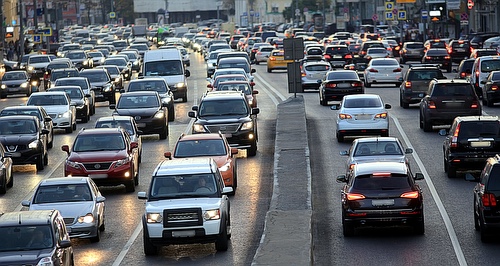Make / Model Search
News - General NewsMotor industry reacts to 2022-23 Federal BudgetThe auto industry continues to call for comprehensive vehicle-tax reform, while fuel excise cuts are deemed to be nothing more than temporary pain relief.
Cuts to fuel excise deemed a two-edged sword, while vehicle tax reform is conspicuously absent5 Apr 2022 By TONY O'KANE FOR the average Australian motorist, there was one line item in the Federal Government’s 2022-2023 Budget that likely commanded the bulk of their attention – the halving of the fuel excise from 44.2 cents per litre to 22.1 cents. With petrol prices recently pushed well above the $2-per-litre mark due to the Ukraine conflict, cutting fuel excise – either totally or in part – was seen as an expeditious way to ease financial pressure on motorists.
However, although the reduction is only temporary (the fuel excise relief is set to expire in September) and fuel prices have already dropped back down to around 170 cents per litre for 91-octane, reactions to the Government’s measure haven’t been universally positive.
The Australian Automobile Association (AAA) described the fuel-excise cut as a “booby trap” for the Budget, that will “fix neither Australia’s transport tax problems, nor the factors driving up petrol prices” and “generate more medium-term challenges than it solves”.
The AAA was also sceptical of whether retailers would pass on the full 22.1 cent saving to motorists, though the Australian Competition and Consumer Commission (ACCC) has issued a statement reminding refiners, importers, wholesalers and retailers that it will be putting petrol pricing under the microscope.
“We will contact petrol retailers to set out our clear expectations that the savings are passed on to consumers and advise them that we will be monitoring their margins,” said ACCC Chair Gina Cass-Gottlieb in a statement released last week.
“We will also continue to inform consumers of retailer behaviour”.
Beyond leading to an expected $2.65b shortfall in fuel tax revenue for road funding and virtually locking in an instant 24.2 cent (when GST is factored in) fuel price jump in six months’ time, the AAA says the fuel excise is now “past its use-by date”.
With the rapidly increasing uptake of plug-in hybrids and fully electric vehicles, the AAA says having road funding linked to the volume of liquid fuels consumed is no longer equitable – or sustainable.
It’s a call echoed by the Australian Automotive Dealer Association (AADA). While the AADA was more positive about the fuel excise cut, the association renewed calls for an overhaul of how vehicles are taxed in this country.
“Halving the fuel tax for motorists for six months will relieve some pressure in the short term, but what is desperately needed is a wholesale review of the automotive taxation system in Australia,” said AADA CEO James Voortman.
“This budget shows that motorists will be paying billions in taxes, such as import tariffs, the luxury car tax, fringe benefits tax, GST and (fuel) excise. With Australia no longer manufacturing passenger vehicles and with the emergence of low-emissions vehicles, it is questionable whether our automotive taxation regime is fit for purpose,” Mr Voortman continued.
“This is a time of immense change in the automotive industry, and we are seeing state and territory governments follow their own paths on crucial issues such as provision of incentives for low-emission vehicles, vehicle taxation and road-user charging. We simply need national leadership.”
However, the AAA was complimentary of the Budget’s $6.5m provision for the creation of a new real-world fuel economy test program, one that should – if European experience with the WLTP standard is anything to go by – deliver fuel economy and energy efficiency claims that are more in step with real-world results.
The Budget’s $9.1b commitment for priority road funding was also applauded by the AAA, as was the increase in funding for the Bridges Renewal program from $90m to $131m.
An extra $428m was earmarked for the Roads of Strategic Importance program and $180m of funding committed to a new regional level crossing safety program in the 2022-2023 Budget, however national funding for blackspot removal dropped from $137m to $128m.
In terms of infrastructure funding, South Australia was the biggest winner in this Budget, with just over $2.8 billion earmarked for the state’s priority road upgrades. New South Wales followed it with $2b in road funding, with Victoria receiving $1.38b, Western Australia $1.25b, Queensland $512m, Tasmania $505m, the Northern Territory $237m and the Australian Capital Territory just $51m.  Read more28th of March 2022  FCAI calls for fuel tax reformRecord fuel prices prompt calls to scrap ‘antiquated’ taxes3rd of July 2020  AAA backs renewed calls for EV road taxProposed EV road tax gains support from AAA and NSW as fuel excise ages |
Click to shareGeneral News articlesResearch General News Motor industry news |











Facebook Twitter Instagram